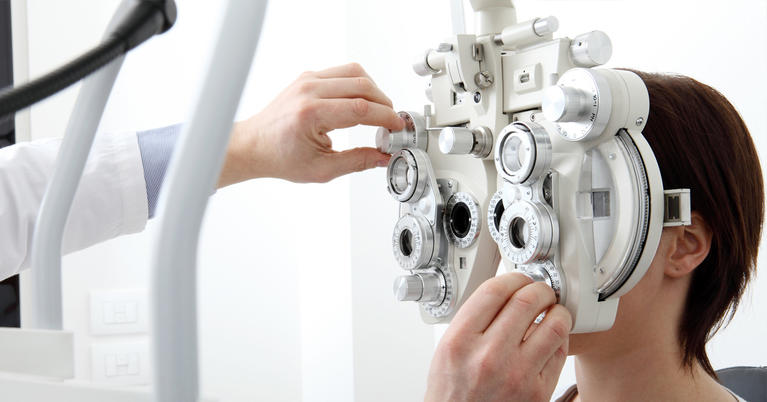Locate a Neurologist in Andalusia: Specialized Clinics and Treatment Providers
Locate a Neurologist in Andalusia: Specialized Clinics and Treatment Providers
Blog Article
The Advantages And Disadvantages of Different Refractive Surgical Procedures for Enhanced Eyecare

LASIK Surgery
LASIK surgery is a commonly performed refractive treatment that aims to correct vision problems such as farsightedness, nearsightedness, and astigmatism. During the procedure, a slim flap is created on the cornea, and a laser is used to reshape the underlying cells, fixing the refractive mistake.
One of the primary benefits of LASIK surgical treatment is the rapid enhancement in vision experienced by lots of people. It is important for people considering LASIK surgical procedure to go through a comprehensive examination by an eye treatment specialist to figure out if they are ideal candidates for the treatment.
PRK Procedure
The PRK procedure, also referred to as Photorefractive Keratectomy, is a type of refractive surgical procedure that intends to deal with vision issues comparable to LASIK surgical procedure. Unlike LASIK, which involves creating a flap in the cornea, PRK works with the surface layer of the cornea. During the PRK procedure, the outer layer of the cornea, called the epithelium, is removed to enable improving of the underlying corneal cells with an excimer laser. This reshaping assists to correct refractive mistakes such as astigmatism, nearsightedness, and farsightedness.
Among the advantages of PRK over LASIK is that it removes the danger of flap-related difficulties because no flap is developed during the surgical treatment. This can be helpful for people with slim corneas or those involved in contact sporting activities where eye trauma is a possibility. The recuperation time for PRK is normally longer contrasted to LASIK, as the outer layer of the cornea requires time to regrow after the procedure. Regardless of the longer recovery duration, PRK can be an appropriate alternative for people looking for vision correction surgical treatment.
SMILE Surgical Treatment
An innovative refractive surgical procedure strategy gaining popularity in the area of ophthalmology is SMILE Surgical procedure. Tiny Cut Lenticule Removal (SMILE) is a minimally invasive procedure that corrects vision by reshaping the cornea using a femtosecond laser. Unlike traditional LASIK surgery, SMILE Surgery involves producing a little incision in the cornea to remove a lenticule, which results in less disturbance to the corneal structure and potentially quicker recovery times.
Among the key advantages of SMILE my explanation Surgical treatment is its capacity to deal with myopia (nearsightedness) and astigmatism with high precision, bring about outstanding aesthetic end results for people. The minimally intrusive nature of the treatment likewise reduces the risk of issues such as dry eye syndrome, making it a beneficial option for people seeking refractive surgical procedure.

LASEK Method
Having actually checked out the benefits and factors to consider of SMILE Surgical procedure, an additional noteworthy refractive surgical procedure strategy worth taking a look at is the LASEK Technique. LASEK, which stands for Laser-Assisted Subepithelial Keratectomy, is a form of laser eye surgery that aims to deal with refractive mistakes such as nearsightedness (nearsightedness), hyperopia (farsightedness), and astigmatism.
Unlike LASIK, LASEK does not involve producing a corneal flap. Instead, throughout a LASEK treatment, the surgeon uses a find out this here diluted alcohol solution to loosen up the thin outer layer of the cornea, called the epithelium. This layer is after that carefully relocated aside to permit the laser to improve the underlying corneal cells. Once the cornea has been improved to the desired level, the epithelial layer is repositioned.
One of the main benefits of LASEK is that it can be appropriate for individuals with slim corneas who may not be good candidates for LASIK. Additionally, LASEK generally results in marginal post-operative pain and a quicker recovery time contrasted to PRK. The visual recovery process with LASEK might be slightly longer than with LASIK.
Implantable Get In Touch With Lenses
Implantable Get in touch with Lenses provide a long-term vision modification remedy for individuals looking for an option to standard call lenses or glasses. These lenses, also referred to as phakic intraocular lenses, are surgically placed right into the eye to remedy refractive errors such as nearsightedness (nearsightedness), hyperopia (farsightedness), and astigmatism. cardiologist andalusia. Unlike traditional call lenses that rest on the surface of the eye, implantable contact lenses work within the eye itself, supplying clear vision without the need for day-to-day maintenance or removal
Among the crucial advantages of implantable call lenses is Web Site their durability. When inserted, they can stay in the eye forever, using constant and steady vision adjustment. In addition, these lenses can be an excellent choice for individuals who are bad prospects for laser eye surgical treatment or who choose a reversible vision improvement treatment.
Nonetheless, implantable call lenses do lug some risks, consisting of the capacity for cataracts or boosted eye pressure. It is essential for individuals considering this choice to seek advice from with an eye care expert to establish if implantable call lenses are the ideal selection for their details demands and eye wellness.
Conclusion
To conclude, each kind of refractive surgical treatment has its own advantages and disadvantages. LASIK surgical treatment is popular for its quick recovery time, while PRK treatment may be appropriate for individuals with thin corneas. SMILE surgical treatment offers very little discomfort throughout the procedure, however LASEK technique may have a longer healing procedure. Implantable contact lenses offer an option for those that are not ideal prospects for conventional surgeries. Individuals ought to talk to their eye care company to determine the very best choice for their private needs.

On The Whole, SMILE Surgical procedure provides an appealing choice for individuals looking to boost their vision via refractive surgery.
Report this page